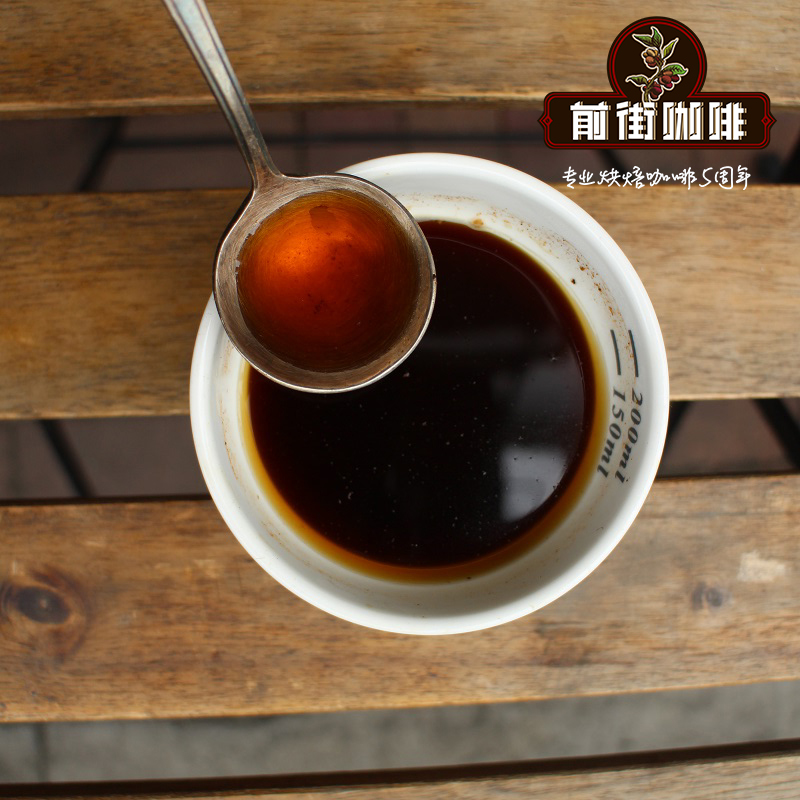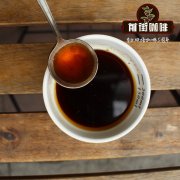What are the characteristics of coffee beans from Mocha Ishmi? What is mocha coffee?

Professional coffee knowledge exchange more coffee bean information please follow the coffee workshop (Wechat official account cafe_style)
[traditional ancient sun] what are the characteristics of coffee beans in the producing area of Moca Yishi Mary? What are mocha coffee beans?
Some people say it is the oldest tree species and others say it is the producing area. At the local market in Haraazi, Yemen, the suppliers of spices, tea, Qat katgrass and coffee say that his coffee beans are special because they are always mixed with very special flavor. Esimar Marie is in the incredible vertical steep boulder area, and coffee is planted side by side with Qat katgrass on etched terraces. She has always had a strong (spicy) personality, with a surprising aroma of red wine.
Mocha coffee from the mountains of Haraz, the oldest Yemeni producing area. Ishima coffee belongs to the oldest coffee tree species. It is grown in the rugged mountains of 6000 to 7500 feet. The size of beans is different, because stones or broken beans are often found in making coffee beans according to the ancient method. In order to transport coffee beans to other places, small quantities of coffee beans need to be transported by means of four-wheel drive that can overcome rugged terrain.
When you find that villages and coffee farms are located on steep slopes in the Haraz district, you can imagine the hardships of local life, and you will naturally regard coffee beans of different sizes as minor flaws. After drinking the entrance of Yishi Mary mocha, when you are moved and amazed by her taste, she also tells you the ancient history of Yemeni mocha.
From the beginning of coffee history, the status of Yemeni coffee is world-famous, with the same origin as Ethiopia's coffee genealogy. The complete preservation comes from the ancient varieties spread in Ethiopia, and the endemic coffee varieties that have gradually developed so far are all Arabica "adzuki beans". Close to the capital Haraz, Bani Matar Bani Mattar (Mattari), Haima (Al-Khaimah) several production areas, coffee beans are always known as "Sunani" Sanani, the harvest period is mainly 10 Mel-December, the local farmers harvest 3 Mel 4 times a year. In Yemeni tradition, the shell and pulp of dried coffee are boiled into a drink called Gishr. Ingredients such as bean curd or ginger will also be added to "Keesi" and then boiled into "Qahwa", which is the favorite drink of the local people.
Farmer Farm owner: Small Holders different small Farmers
Region producing area: Haraazi
Country countries: Yemen Yemen
Farm Size Farm area: 2.8Hectares ha
Altitude altitude: 1840 Murray 2125 meters
Coffee Characteristics: coffee characteristics
Variety varieties: Mainly Jaa'di, also Tuffahi, Dawairi, and Ismaili (Ishmali)
Processing System treatment: Traditional Natural traditional Yemeni roof sun drying
Appearance appearance: 15muri 16 eyes
Top Jury Descriptions judge's comment: the baking degree measured by the cup for 60 seconds at the beginning of the first explosion (Cinnamon)
Aroma / flavor flavor: strawberry, pineapple, cinnamon, clove, red wine, maple syrup, caramel
Acid quality: tannic acid, tartaric acid
Complex complexity and other other: unrestrained fruit wine, velvety taste, chocolate finish, high-profile spice aromas
Yemeni coffee has a unique and strong flavor, due to the desert climate and the lack of dry air. Coffee trees only grow farmland in the "Wadi" of Yemen's high-altitude mountains (with an average elevation of 1000m), and use the slopes of the canyon to reclaim terraces to grow coffee.
With the exception of the rainy season, it is usually in a dry state, and at first glance the land feels very barren, but the water flowing under the riverbed can incredibly produce excellent coffee fruit. The coffee beans produced are all high-grade export products, picked by hand, combined with traditional sun-drying treatment, and removed pods with grindstone. Smooth and unique flavor on the palate. The quality of being slightly sour and having strong stamina. It has sweet wow coffee and Sumatra coffee to make comprehensive coffee. Locals like to make Turkish coffee with a mixture of mocha and Meso. It is the most suitable coffee to drink after a meal. It is also the best of mochas.
Treatment: ancient solarization
Yemen is a classic of the ancient morning taste of the sun, and it is also the only producer of full-time coffee in the world. the traditional treatment of dripping water is illegal, and it has not changed since Europe became infatuated with game mocha in the 17th century. This is related to the extremely dry climate in Shumen, where coffee is mainly grown in the central highlands, with an average annual rainfall of only 400 Mel 750 mm, far less than the best rainfall of 1500 Mel 2000 mm in Arabica.
Due to the lack of water environment, farmers have been unable to introduce more advanced washing methods, wild flavor is better than Hara coffee, so Yemen has become the best choice to experience the ancient early taste.
The highlands of central Yemen are hilly and rugged. Most small farmers use the planting method of breaking up into parts. Several plants are planted on steep slopes and dozens of plants are planted on terraces or cliffs, each with different soil and water and micro-climate, so the fragrance composition is also different.
The sun treatment of Yemeni farmers is rougher than that of Ethiopia, and the coffee fruit is not picked until it dries on the branches and turns purple-black and falls to the ground to pick it up. This is different from the exquisite sun in which Ye Jia Xuefei or Sidamo picks red fruit and lays it on the "elevated net bed", which is the main reason for the heavy game in Yemen.
The natural sun treatment in Yemen is to manually harvest fully mature coffee beans and directly place the newly harvested coffee beans in a special coffee drying yard or in their own compacted soil front yard to receive the sun. During the sun drying period with Taiwan, rice is usually turned over with a wooden rake to keep each bean evenly dried. After about 20 days of coffee drying, remove the outer pulp and peel from the coffee beans. Yemeni coffee is rich in flavor, complex, wild, mellow, strong fermentation and low acidity, coupled with the fact that Yemeni coffee often contains an uncertain factor (the time of rain in the season). It is not too much to call her the most special coffee in the world.
Flavor: an unforgettable faint scent of flowers, followed by a strong smell of cocoa, with a mellow taste in the mouth, the sweeter the oldest coffee, mellow cocoa and flowers, hazelnut and maple-like sweetness make people equate it with high-grade chocolate The irreplaceability of this ancient coffee flavor makes mocha a favorite coffee taste all over the world.
Qianjie recommended cooking:
Filter cup: Hario V60
Water temperature: 90 degrees
Degree of grinding: small Fuji 3.5
Cooking methods: the ratio of water to powder is 1:15, 15g powder, the first injection of 25g water, 25 s steaming, the second injection to 120g water cut off, waiting for the powder bed water to half and then water injection, slow water injection until 225g water, extraction time about 2:00
Analysis: using three-stage brewing to clarify the flavor of the front, middle and back of the coffee. Because the V60 has many ribs and the drainage speed is fast, it can prolong the extraction time when the water is cut off.
Important Notice :
前街咖啡 FrontStreet Coffee has moved to new addredd:
FrontStreet Coffee Address: 315,Donghua East Road,GuangZhou
Tel:020 38364473
- Prev

How do you drink 90 + coffee? What kind of 90 + coffee do you have? Introduction to ninety plus coffee90+ Coffee
Professional coffee knowledge exchange more coffee bean information please follow the coffee workshop (Wechat official account cafe_style) what is NINETY PLUS (90 +)? Ninety plus is an internationally renowned coffee bean production and sales company, and is famous for providing rare and unique raw coffee beans. In addition to working directly with coffee farmers, it also has 134 kilometers in Panama.
- Next

What is the growing environment of Moka Yishi Mary in Yemen? What is the mocha tree? How to use v60
Professional coffee knowledge exchange more coffee bean information please follow the coffee workshop (Wechat official account cafe_style) Yemen Mocha Yishi Mary growth environment? What is the mocha tree? How to use v60 filter cup to brew mocha? The special sun treatment of the Yemeni mocha is to harvest the mature and dry coffee beans on the trees manually and put the whole coffee directly on the
Related
- Detailed explanation of Jadeite planting Land in Panamanian Jadeite Manor introduction to the grading system of Jadeite competitive bidding, Red bid, Green bid and Rose Summer
- Story of Coffee planting in Brenka region of Costa Rica Stonehenge Manor anaerobic heavy honey treatment of flavor mouth
- What's on the barrel of Blue Mountain Coffee beans?
- Can American coffee also pull flowers? How to use hot American style to pull out a good-looking pattern?
- Can you make a cold extract with coffee beans? What is the right proportion for cold-extracted coffee formula?
- Indonesian PWN Gold Mandrine Coffee Origin Features Flavor How to Chong? Mandolin coffee is American.
- A brief introduction to the flavor characteristics of Brazilian yellow bourbon coffee beans
- What is the effect of different water quality on the flavor of cold-extracted coffee? What kind of water is best for brewing coffee?
- Why do you think of Rose Summer whenever you mention Panamanian coffee?
- Introduction to the characteristics of authentic blue mountain coffee bean producing areas? What is the CIB Coffee Authority in Jamaica?

